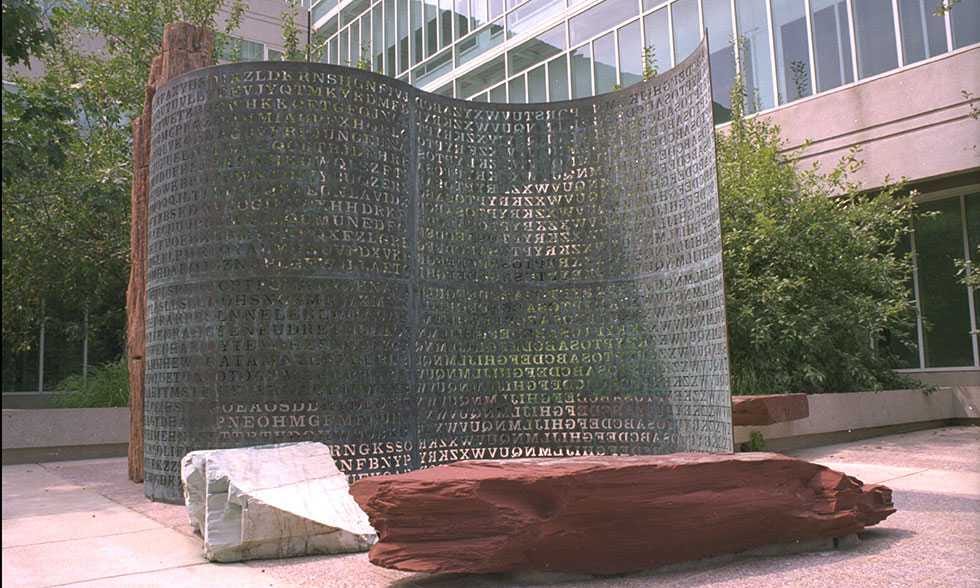Noah Brier | October 21, 2025
The NSA vs. Library Science Edition
On the recent cracked CIA code, physical files, and the limits of computational force.
Colin here. For 35 years, the world’s most sophisticated minds have attacked Kryptos, a sculpture on display at CIA, with everything in the cryptographic arsenal. The NSA threw teams at it. Computer scientists deployed algorithms, and thousands of obsessives spent decades analyzing letter frequencies, transposition matrices, and polyalphabetic substitutions. They all failed to solve the final 97 characters carved into the CIA sculpture’s copper sheets.
Then last month, two journalists cracked it in one evening using a powerful tool in intelligence gathering: asking a librarian for some boxes.
The finale to one of cryptography’s greatest challenges began when Jarett Kobek, reading the auction announcement for Jim Sanborn’s planned sale of the solution, noticed a throwaway line about “coding charts” in the Smithsonian archives. He asked his friend Richard Byrne to request the boxes. Byrne spent September 2nd photographing papers. That evening, Kobek spotted some scraps held together with yellowed tape containing the words “BERLIN CLOCK”—a known K4 clue. The papers literally spelled out the complete plaintext.
Sanborn had accidentally included them when archiving his materials during cancer treatment a decade ago. “I was not sure how long I would be around and I hastily gathered all of my papers together,” he told the Times.
Why is this interesting?
The solution to the CIA’s most famous puzzle had been sitting in Box 52, available to anyone with a library card and an afternoon to kill.
“This is a problem everybody has been attacking as a STEM problem,” Kobek told the Times. “Cryptographic science could not solve Kryptos—but library science could.” It’s such a perfect line that it feels like the punchline to a 35-year setup.
The human error is almost too poetic. Sanborn faced a deluge of crazies trying to solve the puzzle, including death threats, and even had to install panic buttons. He claims the puzzle has “destroyed marriages” and driven unwanted guests to his door. And the whole time, the answer was sitting in a publicly accessible archive because he grabbed the wrong papers while rushing to chemotherapy.
Thousands of people treated K4 like a mathematical proof that must be solved through computational force. They built programs, frequency tables, and decryption matrices. They approached it like the NSA through pure technical prowess. Meanwhile, the answer required something far simpler: someone checking the filing system.
As one cryptographer noted, without the method of solving it, K4 isn’t really “solved.” This is true. But there’s something democratic about library science defeating the CIA, NSA, and the entire codebreaking community. No security clearances needed, no supercomputers, no PhD in mathematics. Byrne compared their discovery to the popular trend of “open-source intelligence,” but really it’s old-fashioned research. (CJN)
